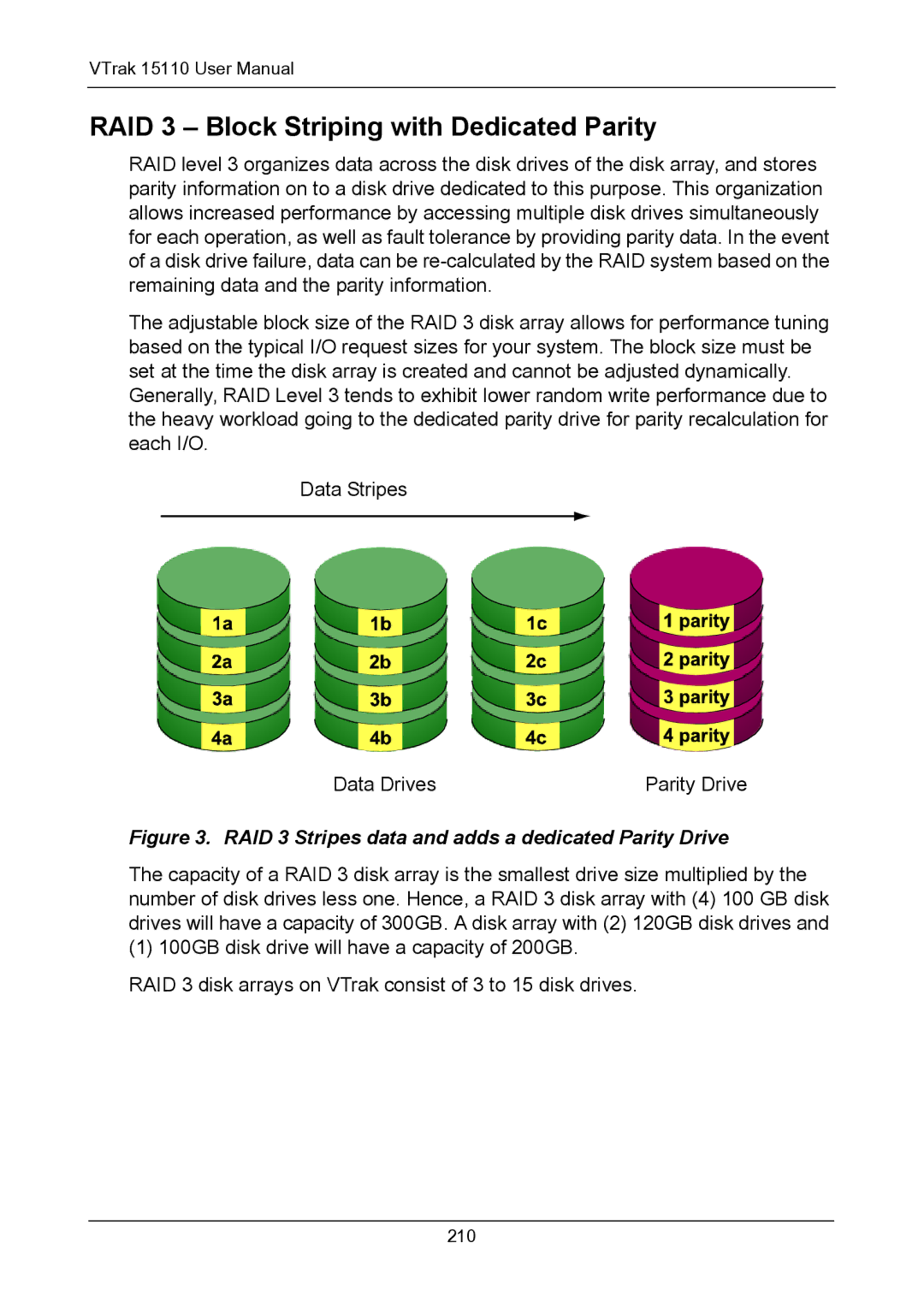
VTrak 15110 User Manual
RAID 3 – Block Striping with Dedicated Parity
RAID level 3 organizes data across the disk drives of the disk array, and stores parity information on to a disk drive dedicated to this purpose. This organization allows increased performance by accessing multiple disk drives simultaneously for each operation, as well as fault tolerance by providing parity data. In the event of a disk drive failure, data can be
The adjustable block size of the RAID 3 disk array allows for performance tuning based on the typical I/O request sizes for your system. The block size must be set at the time the disk array is created and cannot be adjusted dynamically. Generally, RAID Level 3 tends to exhibit lower random write performance due to the heavy workload going to the dedicated parity drive for parity recalculation for each I/O.
Data Stripes
Data Drives | Parity Drive |
Figure 3. RAID 3 Stripes data and adds a dedicated Parity Drive
The capacity of a RAID 3 disk array is the smallest drive size multiplied by the number of disk drives less one. Hence, a RAID 3 disk array with (4) 100 GB disk drives will have a capacity of 300GB. A disk array with (2) 120GB disk drives and
(1)100GB disk drive will have a capacity of 200GB.
RAID 3 disk arrays on VTrak consist of 3 to 15 disk drives.
210
